Having had a good introduction to the Champagne region, we made our way to the famous WWI battlefields of Verdun. We made a pit stop at the local supermarket (or intermarché) to pick sup some groceries for the next couple of days! We had to take a picture of our haul because we felt it was such a good bargain for the amount and variety of food products we got!
We've really been enjoying all the fresh and seasonal fruit here – from nectarines and peaches to plums, figs and best of all, cantaloupes! The cantaloupes here taste infinitely better than anything we’ve ever gotten in Canada. On the way to Verdun we also stopped at a road side fruit stand to pick up "mirabelles", which are a specialty of the region. We’re not quite sure what the English name for this fruit is but it seems to be some sort of yellow colored plum (tastes like a plum and has a similar pit in the centre). On the way into Verdun, we inadvertently drove along the Voie Sacrée (sacred road) and visited the memorial for the Voie Sacrée. This memorial was built in 1967 to recall the role of the Road Transport Service during the battle of Verdun. From February to December 1916, supplies and soldiers travelled this road (known as the “B” road because it went from Bar-de-Luc to Verdun) to get to the front. A total of 8,200 men maintained the narrow, winding road day and night and shovelled a total of 900,000 tonnes of cobblestones to keep the road from completely deteriorating. Vehicles travelled along it at a rate of 1 every 10 seconds, forming a fleet that consisted of 6,000 vehicles. In 9 months, they moved 2.4 million men and more than 1 million tonnes of munitions! Looking down on the winding road that we had just travelled along (photo of the road included below), you could almost imagine the snaking trail of vehicles stretching into the horizon.
When we arrived in Verdun, the tourist info centre was closed for lunch (most places in France are closed from 12-2pm). So we decided to check out the town centre of Verdun which is entered by crossing the Chausse bridge and entering via the Chausse gate (Verdun used to be a fortified town and this is one of the still standing original gates). We hadn’t had lunch yet and the cafes and restaurants along the river’s edge were very inviting, especially in the heat. So we sought some shade at a restaurant facing out onto the river. We ordered a croque monsieur each (Megs had the “à l’ancienne” – which is gruyere, ham, béchamel sauce and I had the “crème fraiche” – which was the same but with crème fraiche (sort of like whipping cream) instead of béchamel. Each order came with a side of green salad and we thoroughly enjoyed the meal as we watched the canal boats drift by.
We were re-energized to continue our touring and by the time we were done lunch, the TI (Tourist Information) was open. We picked up our brochures on the surrounding battlefields and monuments and purchased tickets to the Memorial du Verdun and the Ossuaire du Douaumont (Douaumont Ossuary). We then drove out to Memorial du Verdun and checked into our campsite on the way. The memorial was very informative and well laid out, not to mention, a stark reminder that the freedom we enjoy today had a hefty price. We then took a short walk outside to the Ville de Fleury. It was very eerie walking through the surrounding forests which literally looked like a rolling moonscape, except it was covered in grass and we were surrounded by trees.
Fleury was one of the nine towns that were completely destroyed during the battle of 1916 but as a special remembrance, France still recognizes each of these places as a town and therefore there is still an appointed mayor. The walk to the village of Fleury is marked with the street names and the places where shops and houses used to stand. We then made our way to the Tranchée des Baïonnettes (Trench of Bayonets) where a memorial marks the spot where approximately 50 French soldiers were buried alive. They were waiting in the trenches for the command to attack, bayonets poised upwards to the skies, when German shells exploded around them and buried them in layers of mud. They weren’t discovered till several years later when someone was wandering by and saw a bunch of metal tips (the bayonets) sticking out of the ground. They have since constructed the memorial on top of the trench where the men were found; the crosses mark the spot of each of the men whose names were known.
The next morning we made our way to the Ossuaire du Douaumont. We walked around the inside of the memorial where each stone is marked with the names of the 130,000 French and German soldiers whose remains were not found. The memorial is about 130 meters long and at the centre, there is a tower with a bell at the very top that is rung 4 times a day in remembrance. On the outside face of the memorial, they have the crests of the cities that contributed to the building of the memorial (we spotted Ottawa and Montreal among them).
We watched a 20 minute movie presentation on the battle of Verdun that was extremely well done. We then walked to the top of the tower and from there got a view of the battlefields of Verdun and the cemetery below.
It’s hard to imagine the entire place barren and shells flying everywhere given that it’s now covered in trees. Sometimes as many as 10 shells per second would explode, going on continuously for 12 hours a day – as per individual accounts from soldiers. Once we were outside again, we had a peek through the windows at the base of the monument. The sight of thousands of skulls and bones of the unidentified soldiers really gave us the shivers. In front of the Ossuaire, are the grave markers for 15 000 French soldiers. The grave markers for the Muslim soldiers were not a cross and they were on an angle so that they faced Mecca. We also visited the nearby monuments erected in honour of the Jewish and Muslim soldiers.
Having finished at the Ossuaire, we made our way into Verdun to pick up some stamps at La Poste but it turned out that it was an unmanned post office and therefore they didn’t actually sell you real stamps by the piece – you had to buy a roll of them or just get your letter stamped by a machine. For those of you that know of Megs’ philatelic pursuits, this just wouldn’t do because there would be no interesting stamps to add to her collection. So with the post office being a bust, we decided to sample a delicacy that Verdun is famous for – “Dragées de Verdun” (Sugared Almonds of Verdun). The treat originated when an apothecary in 1220 had a stroke of genius and took an almond that he was using to make some cakes and coated it with a layer of sugar and honey. Then, to make it easier to transport, he baked his new delicacy in an oven. The production of these “dragées” really took off when King Louis XIV found out about this confection. Very quickly, this product became popular in the palaces of France and abroad and in each room, a jar of sugared almonds was often found (perhaps this accounts for the poor tooth condition).
We headed to the factory where these sugared almonds are produced and at the factory shop, we did a little “degustation” or tasting. They were indeed delicious – very delicate in flavour and the almonds themselves were very fresh and crunchy. They came in a variety of flavours from lightly sugared to strawberry. We were too late for a tour of the factory but at least we had managed to taste these sugary delicacies. We looked around for a small bag of treats to take with us on the road but the smallest bag (at 200g) was still 13 euros! We decided that perhaps this treat was one best left to royalty.
Having finished at the almond factory, we drove out to an area of France known as the Les Vosges. The drive was pretty uneventful except that along the way, I got complacent with my navigation since we were on a D (departmental) road (this is the second biggest type of road after an autoroute) and we were pretty much driving in a single direction. We were still using our Michelin road atlas (I think we’ve only used the GPS a couple of times since the start of the trip and mostly just to find a very particular address in a big town when we don’t have a local map) and I forgot to tell Megs about an upcoming fork in the road. Well, we got to it quicker than I had anticipated and Megs was asking me which way to go as we entered the roundabout. I had lost my place in the map book (as I was busy typing up part of this blog entry) and told her to take one of the exits that I thought sounded familiar. After an 8 km scenic detour along a white road (these are the smallest types of road and are usually only big enough for one car at a time), we were back on track to Gérardmer, in the heart of the Vosges mountains.
Verdun
Monday, August 13, 2012
 Verdun, Lorraine, France
Verdun, Lorraine, France
Other Entries
-
1House on Wheels - here we come Europa!
Jul 0935 days prior Vancouver, Canadaphoto_camera8videocam 0comment 5
Vancouver, Canadaphoto_camera8videocam 0comment 5 -
2The journey begins in London
Aug 0310 days prior London, United Kingdomphoto_camera7videocam 0comment 4
London, United Kingdomphoto_camera7videocam 0comment 4 -
3Olympics fun
Aug 049 days prior London, United Kingdomphoto_camera15videocam 0comment 12
London, United Kingdomphoto_camera15videocam 0comment 12 -
4Olympics Fun Day 2
Aug 058 days prior London, United Kingdomphoto_camera15videocam 0comment 7
London, United Kingdomphoto_camera15videocam 0comment 7 -
5Picking up the van and off to Dover
Aug 076 days prior Dover, United Kingdomphoto_camera15videocam 0comment 9
Dover, United Kingdomphoto_camera15videocam 0comment 9 -
6Rough Itinerary
Aug 076 days prior Arques, Francephoto_camera0videocam 0comment 6
Arques, Francephoto_camera0videocam 0comment 6 -
7Arques Glass Factory
Aug 094 days prior Arques, Francephoto_camera7videocam 0comment 4
Arques, Francephoto_camera7videocam 0comment 4 -
8Champagne!
Aug 112 days prior Épernay, Francephoto_camera61videocam 0comment 9
Épernay, Francephoto_camera61videocam 0comment 9 -
9Verdun
Aug 13 Verdun, Francephoto_camera35videocam 0comment 4
Verdun, Francephoto_camera35videocam 0comment 4 -
10Hiking in the Vosges
Aug 163 days later Xonrupt-Longemer, Francephoto_camera41videocam 1comment 9
Xonrupt-Longemer, Francephoto_camera41videocam 1comment 9 -
11Grand vues from the Route des Crêtes
Aug 196 days later Ramonchamp, Francephoto_camera63videocam 1comment 7
Ramonchamp, Francephoto_camera63videocam 1comment 7 -
12Stork sighting at the écomusée
Aug 207 days later Ungersheim, Francephoto_camera43videocam 0comment 7
Ungersheim, Francephoto_camera43videocam 0comment 7 -
13Colmar
Aug 218 days later Colmar, Francephoto_camera48videocam 0comment 2
Colmar, Francephoto_camera48videocam 0comment 2 -
14Cute towns and Villages Fleuris
Aug 229 days later Eguisheim, Francephoto_camera30videocam 0comment 1
Eguisheim, Francephoto_camera30videocam 0comment 1 -
15Wine & Grape tasting in Riquewihr
Aug 2310 days later Riquewihr, Francephoto_camera30videocam 0comment 2
Riquewihr, Francephoto_camera30videocam 0comment 2 -
16Haut Koenigsbourg
Aug 2411 days later Chateau Du Haut Koenigsbourg, Francephoto_camera36videocam 0comment 7
Chateau Du Haut Koenigsbourg, Francephoto_camera36videocam 0comment 7 -
17Fountains and Lights in Strasbourg
Aug 2613 days later Strasbourg, Francephoto_camera71videocam 2comment 3
Strasbourg, Francephoto_camera71videocam 2comment 3 -
18Clocks and Cakes
Aug 2815 days later Furtwangen, Germanyphoto_camera14videocam 0comment 4
Furtwangen, Germanyphoto_camera14videocam 0comment 4 -
19Off to Switzerland
Aug 2815 days later Schaffhausen, Switzerlandphoto_camera9videocam 0comment 1
Schaffhausen, Switzerlandphoto_camera9videocam 0comment 1 -
20Barfussweg
Aug 2916 days later Appenzell, Switzerlandphoto_camera29videocam 0comment 5
Appenzell, Switzerlandphoto_camera29videocam 0comment 5 -
21When the cows come marching in...Alpabfahrt!
Aug 3017 days later Appenzell, Switzerlandphoto_camera25videocam 1comment 5
Appenzell, Switzerlandphoto_camera25videocam 1comment 5 -
22A crash course in Appenzeller history and culture
Aug 3118 days later Appenzell, Switzerlandphoto_camera43videocam 5comment 1
Appenzell, Switzerlandphoto_camera43videocam 5comment 1 -
23Stamp Stop in Liechtenstein
Sep 0119 days later Vaduz, Liechtensteinphoto_camera22videocam 1comment 4
Vaduz, Liechtensteinphoto_camera22videocam 1comment 4 -
24Lucerne
Sep 0220 days later Lucerne, Switzerlandphoto_camera55videocam 0comment 3
Lucerne, Switzerlandphoto_camera55videocam 0comment 3 -
25Bears in Bern
Sep 0321 days later Bern, Switzerlandphoto_camera36videocam 0comment 0
Bern, Switzerlandphoto_camera36videocam 0comment 0 -
26Murten
Sep 0422 days later Murten, Switzerlandphoto_camera16videocam 0comment 1
Murten, Switzerlandphoto_camera16videocam 0comment 1 -
27Cailler Chocolate Factory
Sep 0422 days later Broc, Switzerlandphoto_camera30videocam 3comment 2
Broc, Switzerlandphoto_camera30videocam 3comment 2
Comments
2025-05-22
Comment code: Ask author if the code is blank

 Verdun, Lorraine, France
Verdun, Lorraine, France
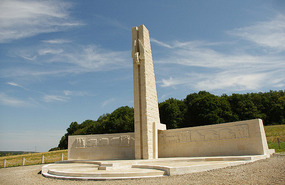
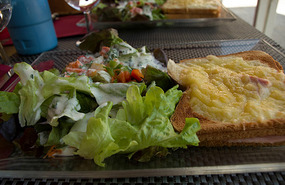
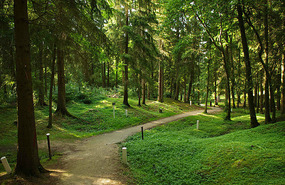
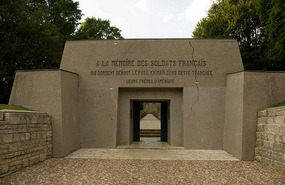
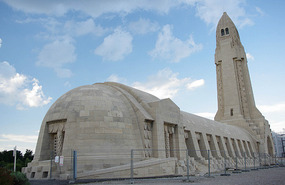
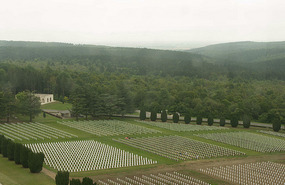
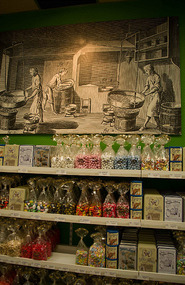

































MIke J
2012-08-24
Wow - I have not travelled much in that part of France so i have not been to those specific war memorials - definitely a pretty emotional place to visit. Imagine being 18 years old, from Canada in those early days, and off to mud pits, battling the rats/water/sickness, and then dodging bullets at the same time - I just can't imagine that.
13 Euros for 200 grams - Yikes!
Anoop, how is your French coming along? :-)
Many thanks for taking the time to post the pictures and blog, I really enjoy seeing what you guys have experienced - not quite as good as being there, but still very neat!
Cheers,
Mike
megs-anoop
2012-08-25
Hey Mike! Great to have your comments and glad you're enjoying the blog. We're a bit behind as we're out the whole day, and then have to edit photos in the evening if we're not totally bushed and manage to get a wi-fi connection and have enough battery left on the laptop (a lot of variables right now). We'll keep the blogs coming though... even some videos perhaps!
MIke J
2012-08-26
I hope you are not trying to get any sympathy here... :-)
Wendy
2012-08-26
Fresh fruit, yumm! And Anoop, pay attention to the road and map please, hahaha :)
(I've given up the "guess who's the blog writer" game by now :P)